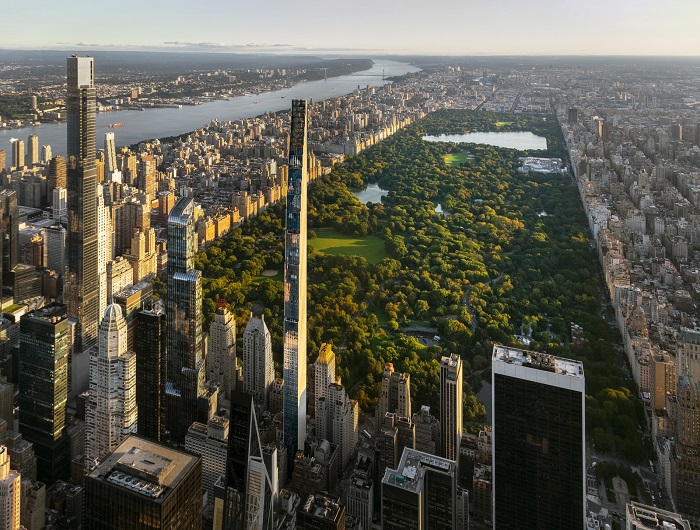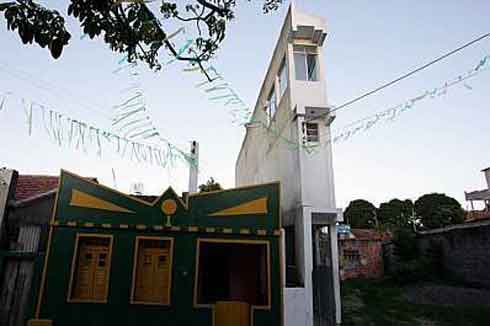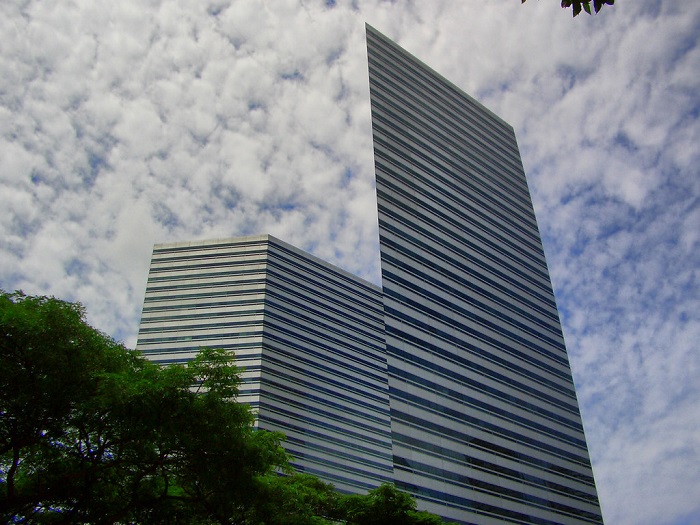ISABEL RUBIO ARROYO | Tungsteno
Throughout history, mankind has erected all kinds of emblematic and striking structures. In this blog, we first reviewed the tallest constructions in history. Then we looked at the world's smartest buildings and the most original. Now we turn our attention to the narrowest buildings on the planet—from tiny houses less than a metre wide to iconic skyscrapers with extravagant angular shapes that seem impossible.
Keret House (Poland)
Could a kitchen, bathroom, living room and bedroom actually fit into a house just over a metre wide? The answer can be found in the Keret House, a two-storey building built in 2012 in Warsaw by architect Jakub Szczesny, with support from the Polish Modern Art. The house measures 72 centimetres at the narrowest point and 122 centimetres at the widest. "It seems that the construction of living space within such a premise is impossible," says its creator, architect Jakub Szczesny. With this construction, the architect aimed to disprove this idea, while "simultaneously broadening the concept of impossible architecture."
Access to the home is via a staircase that, when closed, provides living room space. Electricity is sourced from an adjoining building and the structure has a sewage system independent to that of the city. The structure has been legally classified as an "art installation", as it does not meet Polish housing codes to be a residence. Although no one lives in it permanently, it houses artists and writers who wish to stay there for short periods of time. The Israeli filmmaker and author Etgar Keret, as well as being its first tenant, gave the house its name.
The Keret House measures 72 centimetres at the narrowest point and 122 centimetres at the widest. Credit: DW News.
Flatiron Building (United States)
One of New York's oldest surviving skyscrapers makes the list of the world's narrowest buildings: the Flatiron Building, erected in Manhattan in 1902. It is 87 metres high and has 22 floors. Its name comes from its resemblance to the clothes irons used at the beginning of the 20th century. In addition to its unusual appearance, it became a key structure in the Beaux-Arts modernist architectural movement. Designed by the Chicago-school architect Daniel Burnham, it was one of the first buildings to incorporate a steel skeleton, which weighs some 3,500 tons, and extensive lifts. At its narrowest point, its rounded vertex, it is only two metres wide.
The Flatiron building's name comes from its resemblance to the clothes irons used in the early 20th century. Credit: The Dronalist.
Steinway Tower (United States)
Steinway Tower, in addition to being another of New York's most distinctive towers, is the world's narrowest residential skyscraper. Located in Midtown Manhattan at 111 West 57th Street, it measures 435 metres tall and is 24 times as tall as it is wide. Construction began in 2013 and was completed this year. Some 37,000 cubic metres of concrete and almost 100 tonnes of rebar were used to erect its 84 floors.
The tower was designed by New York-based SHoP Architects. "Without mimicking historic precedent, this approach unifies the massing of 111 West 57th Street in the tradition of classic towers such as One Wall Street, 30 Rockefeller Center or the Empire State Building," say its creators. In addition to 60 luxury flats, there is a swimming pool and a rooftop terrace inside. While the prices are prohibitive for most private citizens, these homes have attracted investors and multi-millionaires. Some residences start at seven million euros and others reach 70 million.

Steinway Tower (centre) is 435 metres high and 24 times as tall as it is wide. Credit: SHoP Architects.
The Gateway (Singapore)
At first glance, the Gateway East and Gateway West buildings in Singapore may appear paper-thin due to an optical illusion. Popularly referred to as "two towering cardboard boxes", they are notable for their trapezoidal shape and sharp corners. Both towers, completed in 1990 and standing 150 metres tall, were designed by I.M. Pei, known for his angular designs and for being the architect of iconic structures such as the Louvre Pyramid and the East Building of the National Gallery of Art in Washington, DC. Its 37 floors have housed multiple offices for companies such as Canon, the International Table Tennis Federation and the logistics company DHL.

The Gateway East and Gateway West buildings are notable for their trapezoidal shape and sharp corners. Credit: PxHere.
The one-metre house (Brazil)
Helenita Queiroz Grave Minho owned a small plot of land next to her home in Madre de Deus, a town in eastern Brazil. She wanted to make use of it, so in 2008 she built a house only one metre wide and 10 metres high. On its three floors and between two walls that are close enough to touch, she designed three bedrooms, two living rooms, a kitchen and even a room with a balcony for hanging out the washing. This structure, which has become one of the main tourist attractions of the town, was built with few resources and prioritising economy and utility over aesthetics and design.

This home, only one metre wide and 10 metres high, houses three bedrooms, two living rooms and a kitchen. Credit: Wikiarquitectura.
These are some of the slimmest buildings in existence. But there are—and have been—many more, scattered across the globe, each with its own particularities. Some, such as La Estrecha, in Spain, have already disappeared. This structure, located in the historic centre of Valencia and just 107 centimetres wide, has been a residence, a love hotel, and a jeweller's shop. Today, only the false façade remains, as the internal space has been joined to the adjacent building. The house at Oude Hougestrat 22 in Amsterdam; London's Slim House; and the Sam Kee Building in Vancouver’s Chinatown, Canada are among the most striking mega-slim buildings still standing.
· — —
Tungsteno is a journalism laboratory to scan the essence of innovation. Devised by Materia Publicaciones Científicas for Sacyr’s blog.
